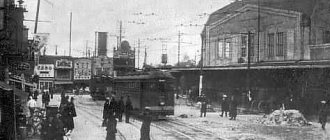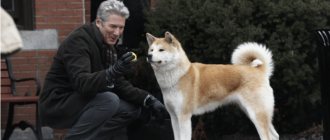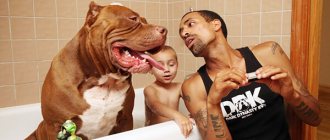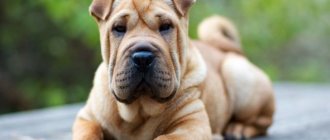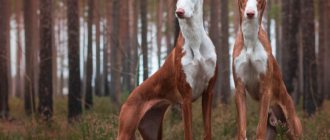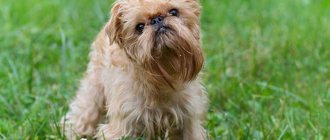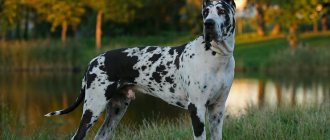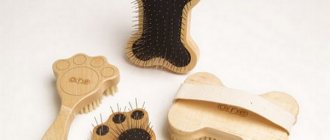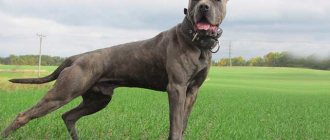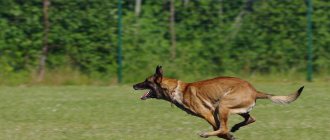Viewers of the film “Hachiko: The Most Faithful Friend” fell in love with the main character. Therefore, they want to know what breed is the dog that starred in this sad story. The cute dog, who played the main role in the famous movie, belongs to the Japanese Akita Inu breed. In Japan itself, these dogs are treated with care and reverence, believing that they bring good luck and happiness. They are taken in this country under the protection of the state.
This dog breed appeared a long time ago, but gained popularity quite recently. Thus, according to Russian statistics, after the release of the film “Hachiko” in 2009, the number of people wishing to buy Akita Inu dogs increased by about 20 percent .
Nutrition
Make sure your dog does not gain excess weight. Being overweight is fraught with impaired digestive function, body asymmetry and poor health. For an adult representative of the breed in question, the daily dose of food is 600 grams. Give him the opportunity to eat twice a day, for example at 9 am and in the evening, closer to sunset.
The younger the dog, the more protein it should consume daily. Feed her dairy products, raw meat and cereals boiled with vegetables. It is advisable to add special vitamins to your dog’s food. We recommend that you consult your veterinarian first. He himself will select the supplement your pet needs.
Advice! The best complementary food for purebred dogs is bone meal. This is a very useful product, the use of which will significantly improve their health.
Akita Inu puppies , like adult representatives of the breed, can eat dry food. But, it is advisable to dilute their diet with natural food. Recommended products: cottage cheese, chicken eggs, turkey, buckwheat, bananas, etc. But you can’t give them smoked meats and dishes with spices.
How to choose the right puppy?
Before buying an American Akita puppy, it is advisable to decide on the gender of the future pet. Males are more stubborn and willful, while girls are calm and flexible.
Experts do not recommend taking an animal with:
- bloated belly;
- watery eyes;
- excessive thinness;
- dull coat;
- rash, itching and other skin problems;
- wrong bite.
Also, in order to avoid problems in the future, it is worth inspecting the conditions in which the dog is kept, checking the availability of the necessary documents, and finding out about the character and health status of the puppy’s parents.
Attention. The American Akita dog breed is found much less frequently in the Russian Federation than its Japanese relatives.
Large nurseries are engaged in breeding American Akita:
- in Moscow – “Japanese Garden” and “Lucky Star Akitas”;
- Moscow region - “Vladyka of Muscovy”;
- In St. Petersburg - “Rikoran” and “Akita American”.
The cost of a purebred puppy ranges from 35–50 thousand rubles.
Puppies
“Americans” have a good appetite, so it is better to control puppies’ portions from an early age. The amount of food consumed depends on the type of feeding, the pet’s well-being, its age and physical activity.
Most breeders recommend feeding American Akita puppies with natural food. On average, representatives of the breed consume:
| Age of puppies | Menu for the day | Number of meals |
| 1 – 2 months | 100-200 g of chopped meat, 1 boiled yolk (twice a week), 100-150 g of low-fat cottage cheese, 100 ml of cow's milk, 100 g of vegetables, 0.25-0.5 tbsp. porridge | Every 3-4 hours |
| 2 – 3 months | 200-300 g lean meat, 150-200 g low-fat cottage cheese, 100-200 ml milk, 100-150 g vegetables, 0.5 tbsp. porridge, 1 yolk (2 times a week) | 5-6 feedings |
| 3 – 4 months | 300-350 g of lean meat, 150-200 g of cottage cheese, 200-250 ml of milk, 150-200 g of vegetables, 0.5-0.8 tbsp. porridge, 1 boiled egg (2 times a week) | 4-5 meals |
| 4 – 5 months | 350-400 g of meat, 200-250 g of cottage cheese, 100 ml of kefir (milk is no longer given), 200 g of vegetables, 0.5-0.8 tbsp. porridge, 1 boiled egg (2 times a week) | 4 times a day |
| 5 – 8 months | 400-500 g of meat, 200-250 g of cottage cheese, 100-150 ml of kefir, 250 g of vegetables, the volume of porridge depends on the dog’s appetite - from 2 spoons to 1 glass, 1 egg (2 times a week) | Gradual transition to 3 feedings a day |
| 8 – 12 months | 500 g of meat, 1 boiled egg (every 3 days), 250-300 g of cottage cheese, 100-150 ml of kefir, 250 g of vegetables, the volume of porridge remains the same and depends on the dog’s fatness | 1 – 2 times a day |
Attention. When using ready-made food, it is better to give preference to premium and super-premium products.
Puppy size by month
American Akita puppies grow at an accelerated pace. By the age of 6 months, the dog’s growth rate decreases slightly, but does not stop completely. At 1.5 years old, the puppy reaches the height of an adult dog, but continues to grow in width.
On average, depending on age, puppies reach:
| Age, months | Akita boys | Akita girls | ||
| Height, cm | Weight, kg | Height, cm | Weight, kg | |
| 2 | 35 – 38 | 8 – 9 | 31 – 35 | 7 – 8 |
| 3 | 38 – 43 | 13 – 15 | 35 – 41 | 11 – 14 |
| 4 | 43 – 51 | 18 – 21 | 41 – 48 | 15 – 18 |
| 5 | 51 – 56 | 22 – 25 | 48 – 54 | 20 – 22 |
| 6 | 56 – 61 | 27 – 30 | 54 – 58 | 24 – 26 |
| 9 | 61 – 63 | 32 – 36 | 58 – 61 | 28 – 32 |
| 12 | 63 – 67 | 36 – 39 | 61 – 64 | 34 – 38 |
| 18 | 67 – 71 | 40 – 44 | 64 – 66 | 38 – 42 |
Attention! The growth rates of puppies are strictly individual and may differ slightly from the tables in one direction or another.
Nicknames
The nickname for the American Akita should be clear, sonorous and easy to pronounce. It is optimal if it consists of 2–3 syllables.
Suitable nicknames for an American Akita boy:
- Aka ("red");
- Gin (“silver”);
- Yoshiko ("good child");
- Kabuto (“armor”);
- Kita (“north”);
- Kyoka ("happy");
- Mori ("forest");
- Fuku (“lucky”);
- Torah (“tiger”);
- Satu (“sugar”).
Beautiful names for girls:
- Yume (“dream”);
- Choko (“chocolate”);
- Chico (“arrow”);
- Hana ("flower");
- Toshi (“reflection”);
- Oji (“little tree”);
- Miki ("flower stem");
- Sakura (“cherry flower”);
- Ichigo (“strawberry”).
Important. At the request of breeders, the dog's name must begin with the same letter as the litter, and also have a breeding prefix.
Personal place
If an Akita Inu lives in a house or apartment, it is necessary to create a place for it in the corner of a closed room, where the dog can sleep or simply relax and hide from the attention of prying eyes.
You need to put there a moderately hard but cozy special bed (blanket or rug), the size of which will allow the dog to stretch out freely during sleep and generally feel comfortable.
Description of the Akita-Inu dog breed
It is known that the main character of the film “Hachiko: The Best Friend” is an Akita Inu dog. Let's try to tell about it.
The Japanese Akita Inu originated on the island of Honshu, and received its name from the name of the Akita province. According to legends, the ancestors of these dogs were Spitz-type breeds crossed with mastiffs. In ancient times, the Akita Inu was a good hunting dog, without which a person could not go hunting. It was Akita dogs that easily defeated any animal: bear, deer, and wild boar.
During the Great Patriotic War of 1941–1945, the Akita breed was destroyed, because only German shepherds were needed for the army. To save the Akita, many owners tried during this period to cross their dogs with the German Shepherd. This is how the modern type of Akita breed turned out.
Today there is a slightly different type of Akita dog, which is officially approved. She was nicknamed the big Japanese dog or the American Akita - Inu. She was bred after the Japanese gave the Akita to Helen Adams Keller, who lived in America.
What does a Japanese Akita Inu dog look like? The appearance features are as follows:
- The coat color can be any, but only natural.
- The coat itself is long, beautiful and silky.
- The height of an adult dog reaches 57–71, but the female will be slightly smaller.
By nature, these dogs are brave, of course, loyal, intelligent and active. They are easy to train, they love children, and will never offend their owner. If the family where they grow up also has pets, then they will be treated with respect. It is believed that Akita dogs are excellent helpers, good companions in any business, intelligent guards and loving and caring nannies.
Most often, dogs of this breed are used in the following areas:
- Police.
- Rescue service.
- Guide for the blind.
Several rules for caring for an Akita Inu dog
Knowing what breed everyone’s favorite movie character Hachiko is, you need to know how to properly care for such dogs. It is worth noting that the Akita Inu does not require any special care . You just need to follow these steps:
- Remove dirt from the eyes that accumulates overnight. A special solution made from chamomile is used to wash the eyes. This procedure is done every morning, and also when necessary.
- If necessary, you need to clean your ears. In order to remove sulfur from them, a scarf is wrapped around the owner’s finger and cleaning is performed. The use of cotton swabs is strictly prohibited.
- An Akita Inu dog needs to be bathed once a month using a special shampoo.
- Visit your veterinarian once every six months.
The Akita Inu breed has always been valued in Japan, but after the release of the film “Hachiko: Best Friend” it became famous throughout the world . Puppies became in demand, and many dogs of this breed received the name of their favorite hero - Hachiko.
Akita Inu dog
Hachiko and culture
In 1932, when Hachiko was still alive, an article appeared in the most famous Japanese newspaper published in Tokyo, which talked about the dog’s devotion .
When people read the article “A faithful dog is waiting for the return of his owner, who died seven years ago,” they then tried to see this dog. To do this, they gathered at the station and watched Hachiko, touched to the depths of their souls by his behavior. Already in 1934, the dog was present at the opening of the monument, which was solemnly erected in honor of Hachiko for his devotion and love. But since it was built from metal, during the First World War it was dismantled to give the metal for victory. But already in the post-war period, in 1948, at Shibuya station, where the dog died, a monument to the dog Hachiko from the movie was erected. Now this monument serves as an ideal place for lovers to meet, because it is a symbol of eternity and fidelity.
After Hachiko's death, his entrails were buried next to his owner , and a stuffed animal was made from his skin. It can now be seen in the Japanese National Science Museum.
This true story formed the basis of the film "The Story of Hachiko", which was filmed in Japan in 1987. But in 2009, directors from America created a remake called “Hachiko: The Best Friend.” But the directors added their own vision of this situation to the plot.
Diseases
Despite excellent physical characteristics, some dogs, although rarely, are susceptible to diseases, among which are hereditary and acquired.
- One of the genetic ailments is joint dysplasia, which can severely affect the hip joint, leading to immobilization of the animal. The insidiousness of the disease is that only a veterinarian can detect its mild degree, and when obvious symptoms appear, the dog’s movements already become impaired.
- Other Akita Inu diseases are associated with the eyes: entropy (when the lower eyelid turns inward), which can only be treated with surgery, cataracts, glaucoma, retinal atrophy.
- The result of improper care and nutrition can be gastric volvulus, so it is important to monitor whether the dog has enough physical activity and not let it overeat.
Health
Characteristic diseases
Akita Inu often exhibits diseases associated with its nature, body characteristics and size:
- dysplasia of the hip or even elbow joint;
- hypothyroidism and the development of skin diseases;
- birth defects and vision problems;
- immune blood diseases;
- a large number of allergic reactions to products;
- volvulus of the stomach.
The Akita Inu is an intelligent and calm dog, but at the same time independent and strong-willed.
Vaccinations
The first vaccination is given to puppies at the age of 6 weeks, the second at 8.5-9 weeks.
The last, third vaccination is done three weeks after the second if the puppy is completely healthy.
You can only walk with him a couple of weeks after the last vaccination.
Then the adult Akita Inu is vaccinated once a year. Two weeks before vaccination, the dog must be given anti-worm medications, and it must use them two to three more times a year.
In addition, treatment for skin parasites is necessary once a year.
Akita Inus make people feel relaxed and calm, so they help people cope with stress.
Can he live on the street?
Thanks to the structure of the coat and thick, dense undercoat, Akita Inu tolerate cold well and can live outside even in winter, provided several requirements are met.:
- the enclosure should be insulated and located in a place that is not too accessible, but provides sufficient visibility;
- There should be a warm layer of blankets or straw inside the enclosure;
- It is necessary to provide your pet with warm food and water.
You cannot put an Akita Inu on a chain - this is associated in the dog with a loss of freedom and has a negative impact on its mental and physical state.
For information
The film, made by Americans, amazed many people. Today there is even an expression “Loyal like Hachiko” or “Waiting like Hachiko.” The legendary dog from the film has a real prototype, but it would be more correct to call him Hachiko, because such a nickname is as close as possible to the Japanese language. But still the whole world knows and remembers him under the name Hachiko.
